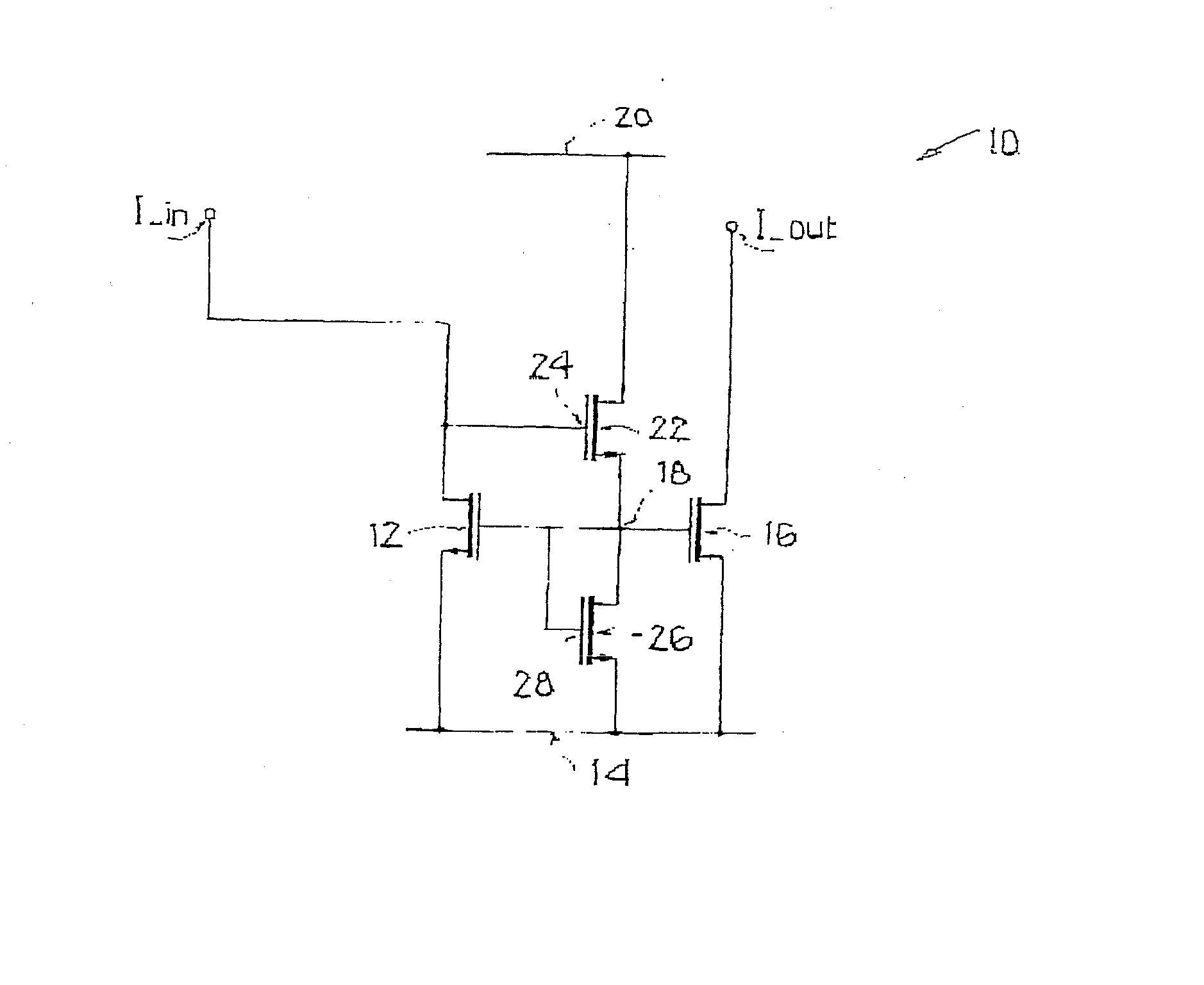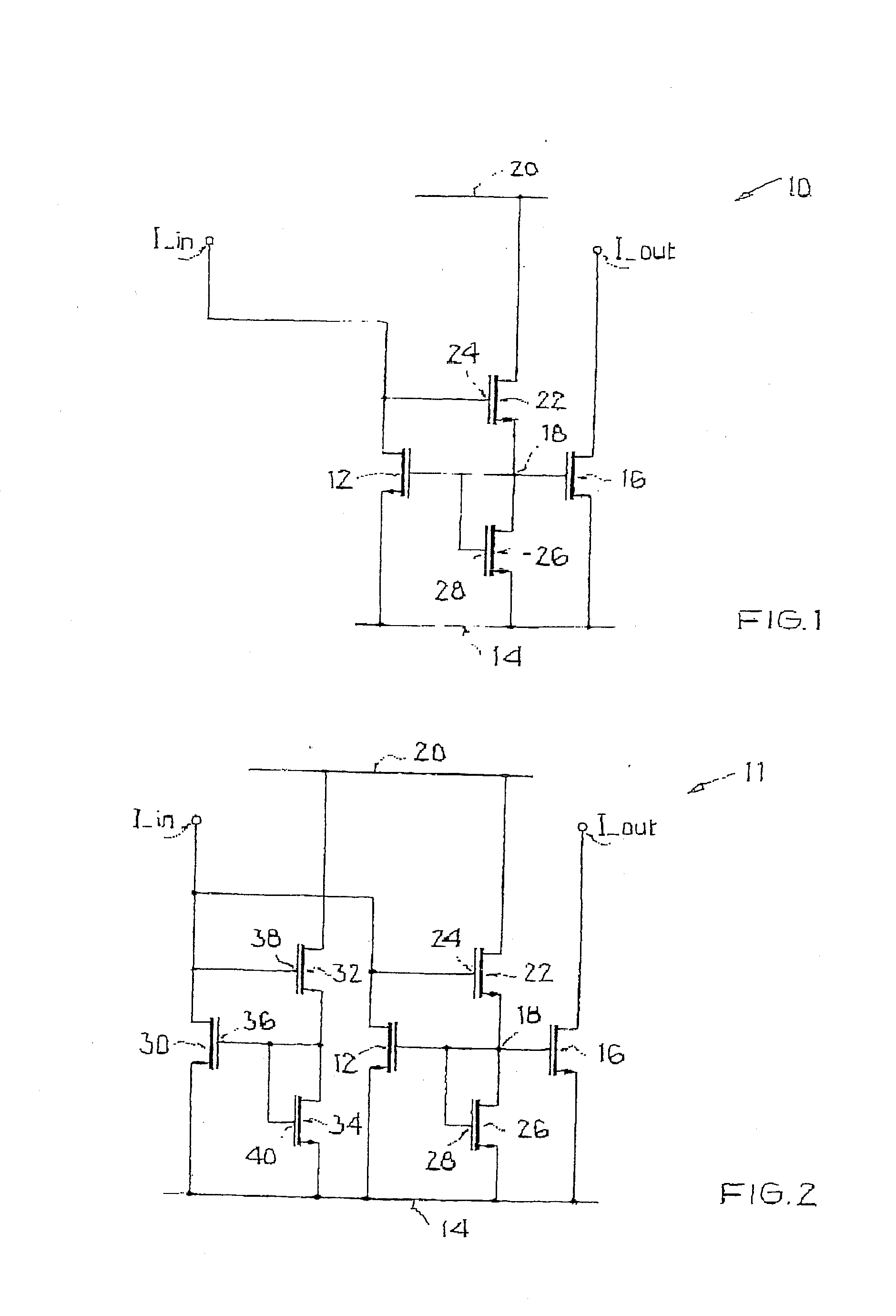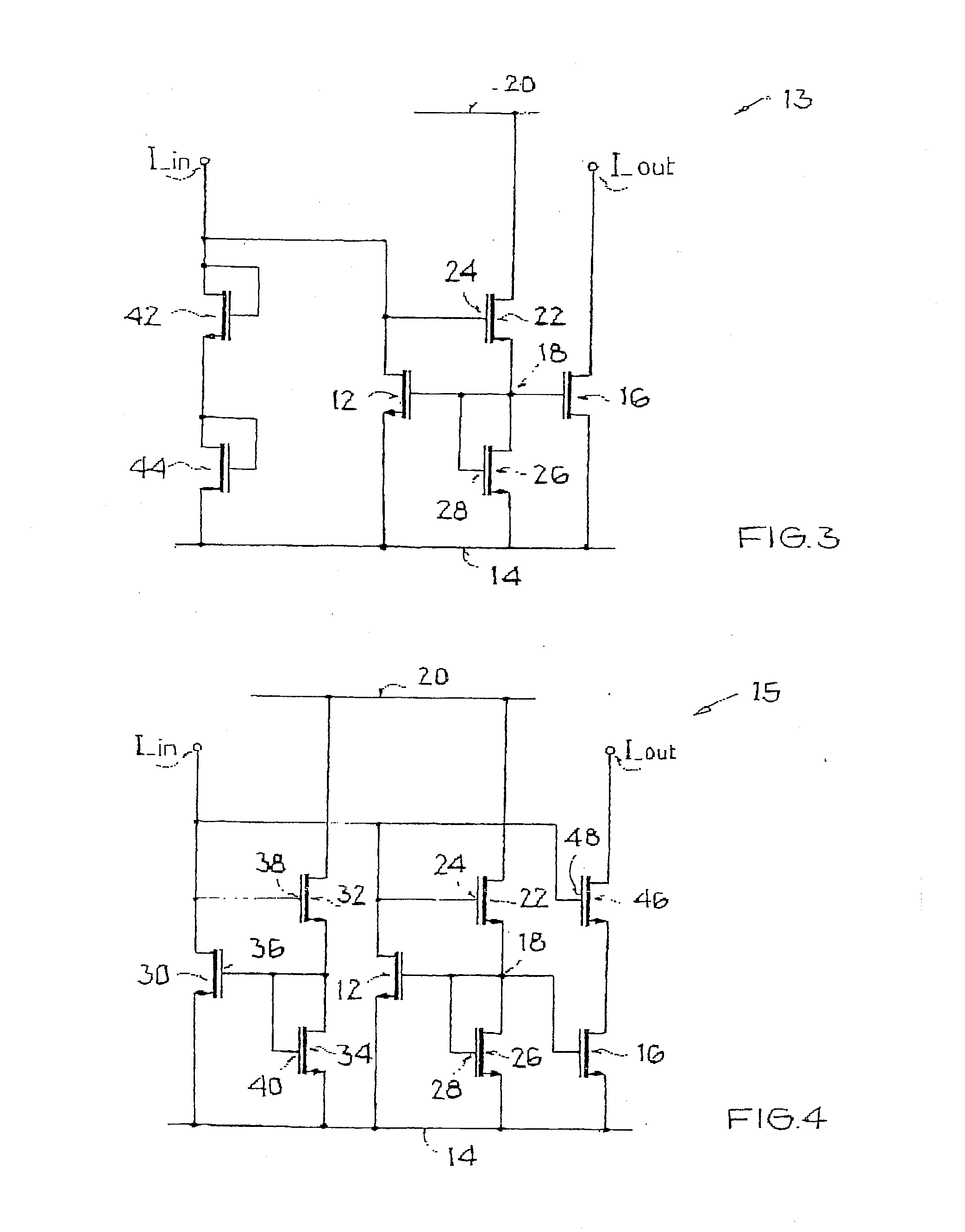High-speed CMOS current mirror
a cmos current mirror, high-speed technology, applied in the direction of amplifiers with semiconductor devices only, instruments, etc., can solve problems such as troublesome delays in some applications
- Summary
- Abstract
- Description
- Claims
- Application Information
AI Technical Summary
Benefits of technology
Problems solved by technology
Method used
Image
Examples
Embodiment Construction
[0039]FIG. 1 shows a CMOS current mirror 10 with a current input I_in, an input transistor 12, a reference potential terminal 14, a current output I_out, and an output transistor 16. The conductivity path of input transistor 12 is located between the first current input I_in and reference potential terminal 14. The conductivity path of output transistor 16 is located between the current output I_out and reference potential terminal 14. Gate terminals of both transistors 12, 16 are connected to a common gate node 18. Current mirror 10 furthermore has a supply potential terminal 20. A first additional transistor 22 has a conductivity path, located between supply potential terminal 20 and gate node 18. Gate terminal 24 of first additional transistor 22 is connected to the current input I_in. The conductivity path of a second additional transistor 26 is located between gate node 18 and reference potential terminal 14. Gate terminal 28 of second additional transistor 26 is also connected...
PUM
 Login to View More
Login to View More Abstract
Description
Claims
Application Information
 Login to View More
Login to View More - R&D
- Intellectual Property
- Life Sciences
- Materials
- Tech Scout
- Unparalleled Data Quality
- Higher Quality Content
- 60% Fewer Hallucinations
Browse by: Latest US Patents, China's latest patents, Technical Efficacy Thesaurus, Application Domain, Technology Topic, Popular Technical Reports.
© 2025 PatSnap. All rights reserved.Legal|Privacy policy|Modern Slavery Act Transparency Statement|Sitemap|About US| Contact US: help@patsnap.com



